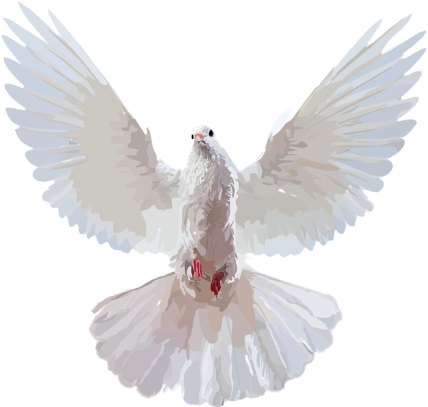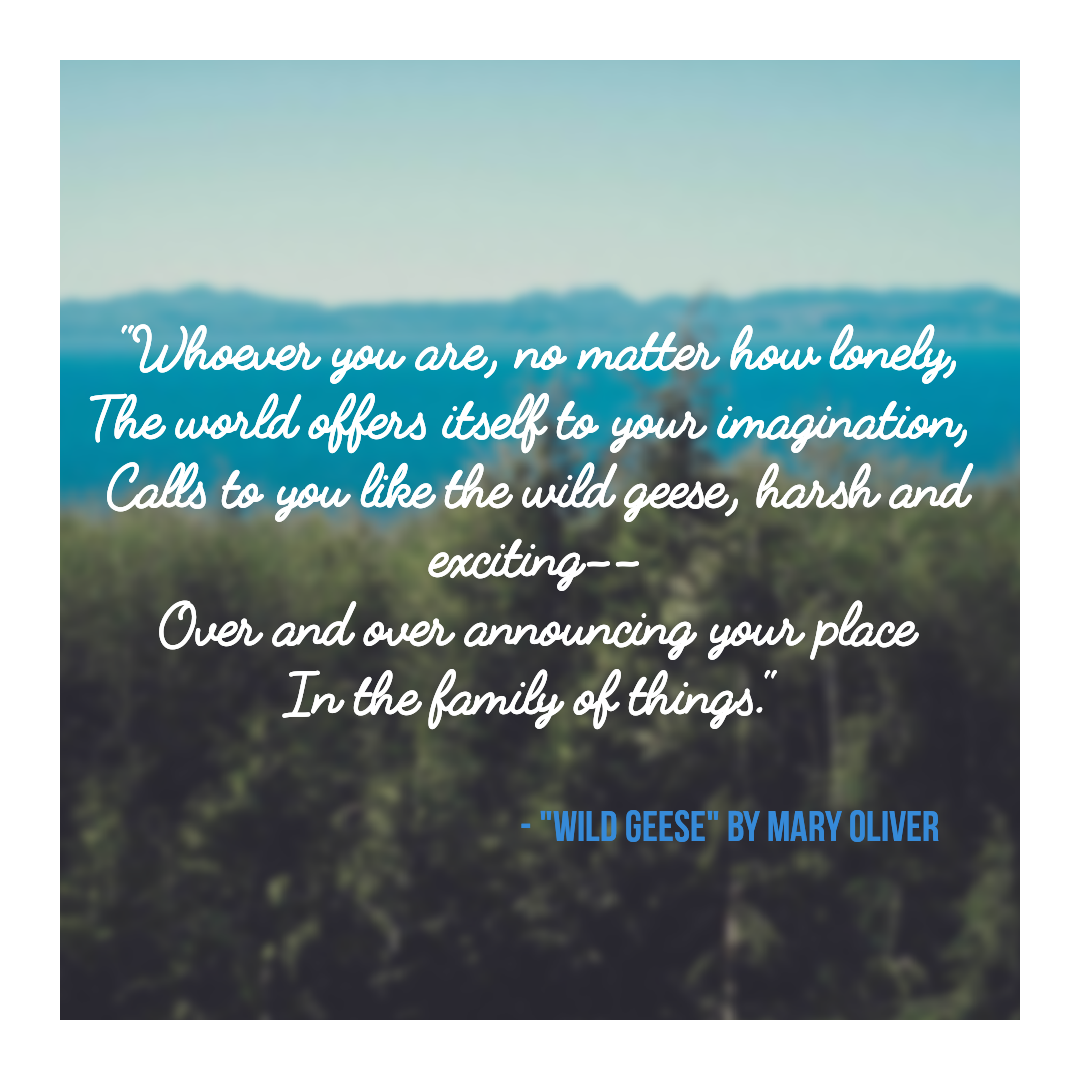
The great South African cleric, theologian, and activist, Desmond Tutu once said, “Hope is being able to see that there is light despite all of the darkness.” To say that the last two months have spelled dark times for mankind is an understatement. With most countries under strict lockdown and the global economy sliding towards a worldwide recession, with so many people sick or starving or both, times like these make it difficult to even muster a sliver of hope. And yet these are the moments when we need hope the most. Hope is what will make it possible for us to put one foot in front of the other, to persevere and stand resilient in the face of utter chaos and uncertainty.
So today, I would like to write about Hope. Or, more accurately, I would like to write about the poem “Hope” is the thing with feathers by the great American poet, Emily Dickinson. This is one of my favorite pieces from Dickinson, and it’s one that I hope would bring a spot of brightness to your day.
“Hope” is the thing with feathers
By: EMILY DICKINSON
“Hope” is the thing with feathers –
That perches in the soul –
And sings the tune without the words –
And never stops – at all –
And sweetest – in the Gale – is heard –
And sore must be the storm –
That could abash the little Bird
That kept so many warm –
I’ve heard it in the chillest land –
And on the strangest Sea –
Yet – never – in Extremity,
It asked a crumb – of me.
The Bird’s-Eye View: A Brief Background on “Hope” is the thing with feathers
That Emily Dickinson (December 10, 1830 – May 15, 1886) is one of America’s most noted and influential poets of all time is indisputable. The poet was a maverick. She wasn’t afraid to go against the flow of literary trends. At a time when her contemporaries were throwing themselves into creating lengthy, grand, and dramatic pieces—Dickinson pared down her details without sacrificing her message and metaphors. She also had no qualms playing around with punctuations and capitalizations—as you no doubt saw in her poem above.
Another noticeable facet of Dickinson’s writings is the lack of titles. Now, before we go any further with this, it’s important to note that most of the poet’s writings were discovered and published after her death. A lot of the poems didn’t have titles, so editors and publishers went with the poem’s first line.
In the case of our featured poem, “Hope” is the thing with feathers, the lack of title may have been deliberate. The piece was written and compiled in 1861/1862 in Dickinson’s hand-sewn Fascicle 13, and published posthumously in the 1891 collection called Poems by Emily Dickinson.
Style, Structure, and Punctuation
Like most of Emily Dickinson’s other works, “Hope” is the thing with feathers is a three-stanza lyric poem that’s written in first person. Though with the way the poem is structured, only using “I” and “me” once throughout the piece, the persona takes a backseat to her subject. She is simply narrating, stating facts.
Each line is said with certainty and conviction—“Hope” is the thing with feathers – that perches on the soul.” And the first-person perspective is used only in testament to these “facts.” As if the narrator is saying, “I know this to be true! I know this from experience,” because I’ve heard it in the chillest land – and on the strangest Sea. She is telling us a story but in a rather distant fashion, opting to shine the spotlight fully on Hope and not herself.
Another notable feature of the poem is its incredible readability, or rather read-out-loudability. Like the often-recited “Invictus” by William Ernest Henley, “Hope” is a poem that shines brightest when read out loud. Now, the secret to this lies in the poem’s clever structure. See, “Hope” is the thing with feathers uses alternating iambic trimeter and iambic tetrameter to lend the poem its appealing cadence or rhythm (the da-dum quality of its words). It also has a basic ABCB rhyme scheme that translates well to pleasant reading.
As for the poem’s punctuation, I think unconventional is an apt descriptor for Dickinson’s unusual capitalization of common nouns and liberal use of dashes. Let’s start with the capitalization. The common nouns capitalized in the poem are as follows: Gale, Bird, Sea, and Extremity. Now, it’s apparent that the words were chosen to emphasize certain points in the poem.
When Dickinson says And sweetest – in the Gale – is heard –, she is referring to how hope often appears during the hardest times. When she drops the word Bird in the second stanza, it’s actually the first time she’s putting a name to her metaphor for hope. And when she says I’ve heard it in the chillest land – and on the strangest Sea, aside from giving us lovely and contrasting imagery, it’s as if she’s also telling us that hope springs wherever and whenever it’s most needed. Lastly, the capitalization of Extremity serves to emphasize the final line of the poem, (never)… It asked a crumb – of me.
And finally, it’s time to tackle the dashes. For a very short poem, “Hope” has a ridiculous number of dashes—fifteen in total! Now, Dickinson uses the dash liberally and deliberately for two reasons. The first is to emphasize a point or a word. Case in point, in the penultimate line, the word never is highlighted by the dashes that enclose it. The second reason is for caesura—or to create breaks for the poem’s reader. Much like the way Derek Walcott uses line breaks in Love After Love to create pause points, Dickinson uses dashes to give the reader time to breathe and take in the words.
Poetry Analysis: “Hope” in the Tempest
“Hope” is the thing with feathers –
That perches in the soul –
And sings the tune without the words –
And never stops – at all –
The first line says it all— “Hope” is the thing with feathers is a poem that uses the image of a Bird to describe the qualities of Hope. While it takes an entire stanza for Emily Dickinson to explicitly say bird, the descriptions she uses all but spells it out for the reader. As you can see in the first stanza, the thing the poet describes has feathers, perches, and can wring out a pretty tune. So, the metaphor is easy enough to grasp. However, what the poet does leave out is the type of avian friend we’re facing. Not that it really matters—a change in bird won’t alter the poem’s tune—but some people do think that the bird could be a white dove. This makes sense as the dove is often used in Christian imagery to signify hope.
Now, when Dickinson describes Hope as something that perches in the soul, she tells us where the emotion blooms and resides—in the heart and not as a product of pure rationalization. While the lines about singing the tune without the words and never stopping tells us about the insuppressible and maybe even unreasonable nature of hope. One can have hope even when the odds are stacked far too high for a positive outcome. The feeling is hardly ever ‘logical’ or controllable.
And sweetest – in the Gale – is heard –
And sore must be the storm –
That could abash the little Bird
That kept so many warm –
Apart from the metaphor of the bird, Dickinson also utilizes seafaring imagery to illustrate the harsh conditions that Hope is able to weather. The words gale and storm appear in the second stanza as situations that try to abash (deflate, humble, or humiliate) Hope. But the little Bird is far stronger than it appears. It will continue its song amidst trouble and thunderstorms. Hope remains constant even when the prospects are dim. It is capable of providing each of us with warmth, comfort, and much-needed reassurance.
I’ve heard it in the chillest land –
And on the strangest Sea –
Yet – never – in Extremity,
It asked a crumb – of me.
It is here, in the final stanza, that Dickinson uses the words “I” and “me.” As mentioned in an earlier paragraph, the use of these words read like a testimony. It tells us that the narrator knows about the nature of Hope firsthand, because she has heard it in the chillest land – and on the strangest Sea. She tells us that in spite of everything Hope has given her, it has – never – in Extremity… asked a crumb – of me. These last two lines tell us that the persona may need and receive Hope, but that the feeling has never wanted or needed anything from her—not a morsel of acknowledgment or even a crumb of encouragement. It persists almost independent from one’s reasonings.
A possible nod to Noah’s Ark
At the risk of over-reaching, I was thinking of how the use of seafaring words in the text – things like “Gale,” “Sea,” “Storm,” and “Land” – seem to conjure images of surviving a tempest at sea. If you close your eyes and let Dickinson’s words wash over you, you can imagine being stuck in a ship or a boat while a storm rages on and threatens to upend your vehicle. With the elements so outside of your control, the only thing keeping you sane is the irrational but unsinkable hope you have for safe passage and survival.
Now, I’m not sure if the imagery was meant to be biblical, but if we go with the theme of the dark and rough seas, you have to admit that there’s something about the poem that harks back to the story of Noah’s Ark. The dire situation, the unending storm, and the bird that carried in its wings the hope of an entire people—these are all elements of the biblical account. Again, I don’t think this was necessarily something that Dickinson had planned out but I still think it is good food for thought.







